Ballarat Horse Trams
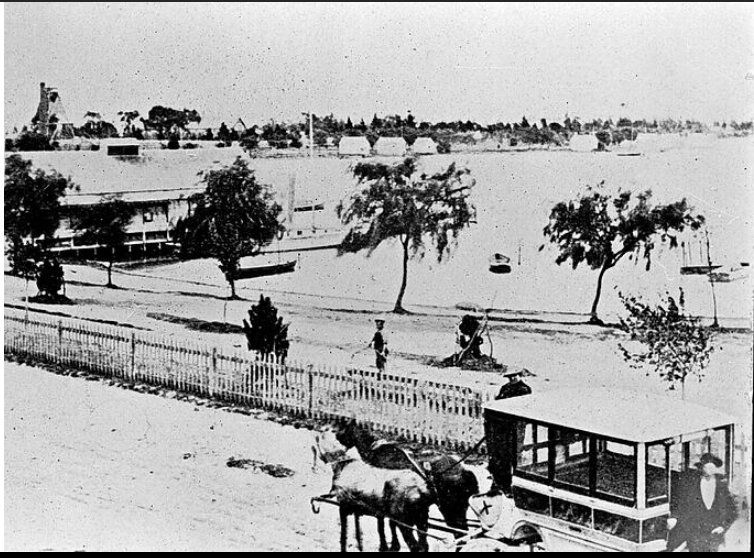
From Waler Data Base @ Facebook. Image: Horse Drawn Tourist Tram at Lake Wendouree, Ballarat, Victoria, circa 1895. … It was used to take tourists around the lake. Adam Lindsay Gordon’s cottage is on the left. Museums Vic.
Ballarat, then Ballaarat, got horse trams in 1887 – the tram lines were officially opened in December 1887, the week before Christmas. The first one of six tram cars pulled up at the City Hall, over 200 people hopped on including the Manager of the Tramways, Mr Moore, and were taken to the gardens and lake. Three of the cars went off the lines, and levers were used to get the wheels back on – it transpired sabotage was at work – there is always someone scared of change, but no-one was hurt nor any horses, it was found stones had been placed on lines so they were cleared off. Cabbies were blamed but it was uncertain if it was them, they had gathered for the tram’s first run too, as a procession, with much laughing and placards on their horse cabs saying they’d gain Moore business than ever etc – it seemed there was no ill will from them and a happy festive air and many jokes accompanied the trams first outing. The leader of the cabbies procession had a beautiful hansom cab and wore a bell topper. On return of the trams to City Hall, there was a big banquet and festivities, over 250 exquisitely dressed women attended. (details in the Age, 22nd December 1887).
At first the tram lines only went to the lake and gardens, but lines were quickly built to the outer suburbs and areas.

‘Sepia photograph of Sturt Street Ballarat, looking west. It shows buildings such as the Ballarat Town Hall, Ballarat Post Office and Sutton’s Music House. Horse drawn carriages, trams, bandstand and Galloway monument are also shown. 1900.The photographer, George Black, had a studio at 189 Barkly Street North, Ballarat from 1899-1900.’
Victorian Collections, from the Federation University Historical Collection
The horse trams were immediately popular – most being large, cumbersome, ornate two storey vehicles they also looked pretty amazing. They went on tram lines constructed by an Adelaide company on contract, starting construction in 1886; in 1888 some lines had to be rebuilt, being laid unevenly. Over the years many more tram lines were added to extend the service within Ballarat and to nearby areas; lines ran from Ballarat to Daylesford etc.
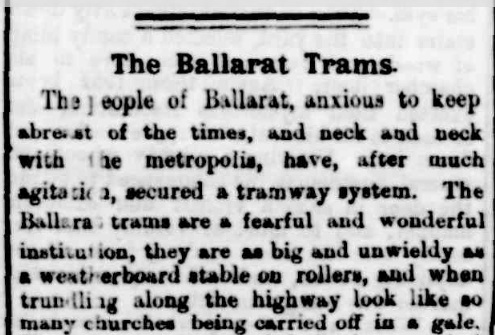

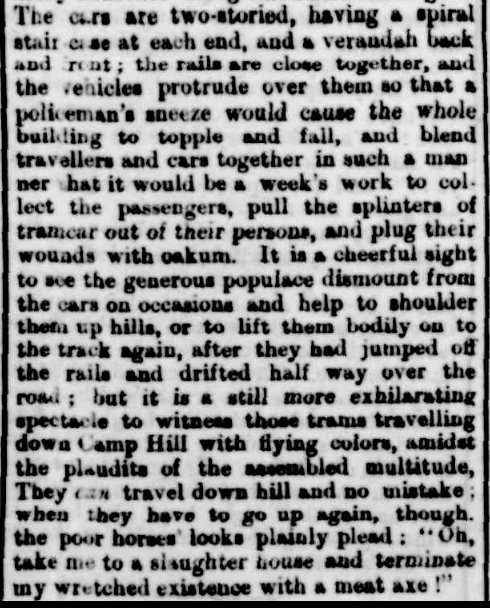
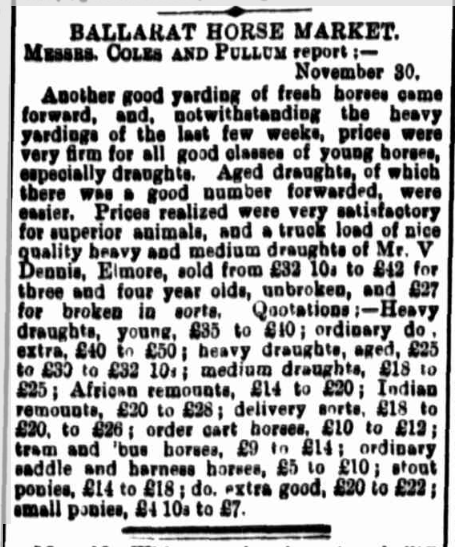
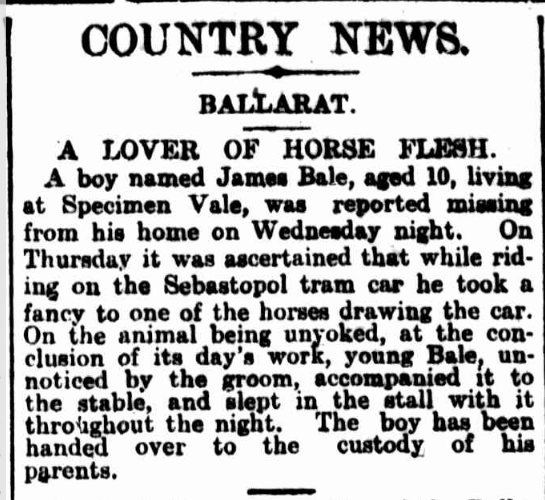
A tramway company ran the trams and paid annual rent for the lines to each council with tram lines.
The horse trams ran until 1903 – when replaced by electric trams – these in turn being phased out in 1971.
Trams had been wanted for some time – the Ballarat Courier 22nd June 1883 reports a deputation of local men to the Railways Commissioner telling him how useful trams would be for getting timber and ore out, and so on, and that tram lines could at some stage be replaced with train lines.
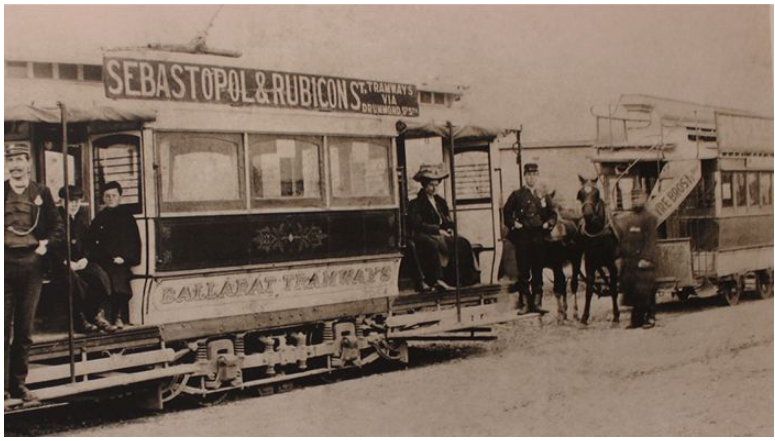
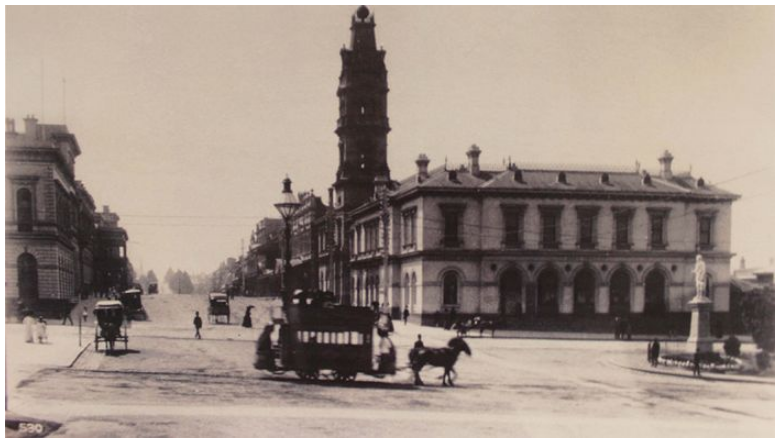
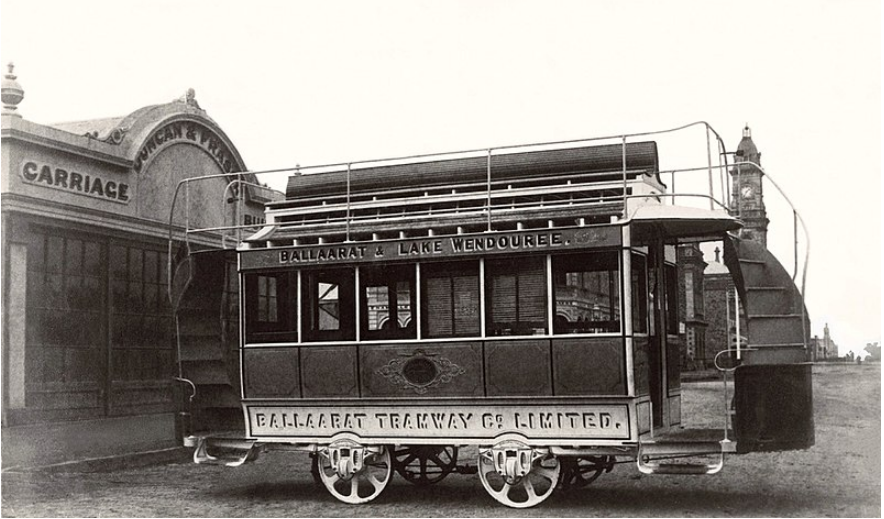
Images left to right: ABC (x2): End of the line: 40 years since No. 40’s last tram route. Ballarat horse trams ran to several regional centres. By Margaret Burin. 6 September, 2011.
‘…horse tram, newly built for the Ballaarat Tramway Co. Limited, Victoria, outside the premises of coachbuilders Duncan and Fraser in Franklin Street, Adelaide, South Australia. c. 1887.’ Wikimedia Commons, from State Library South Australia.
A coach service from Melbourne to Ballarat had begun in 1851, in wet months in those times pack-horses replaced the coach. Ballarat flourished and grew, gold of course playing its part – establishing trams as affordable public transport was a very popular move.
Simply getting from A to B was a regular use, but also popular were outings on trams to scenic areas for picnics – weekends and holidays saw much work for them.
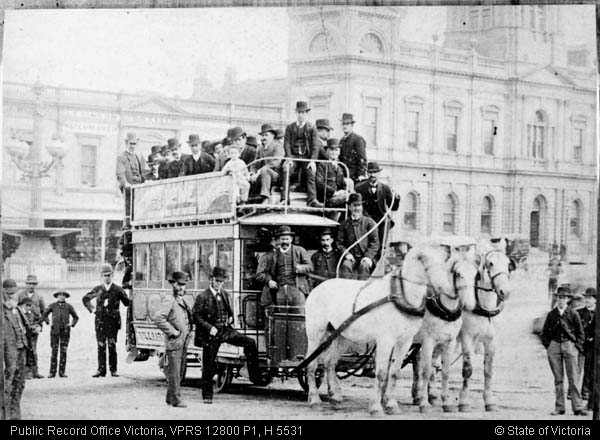
During the time of the horse trams there were many news stories. Drivers were very poorly paid and had poor working conditions – paid only seven pounds a month for long hours, right up until the horse trams were ended. In 1908 the electric tram workers, drivers and conductors, went on strike for better hours and pay.
The horse tram drivers were fined heavily if trams were found over-loaded with passengers, particularly on the Camp Hill section of Sturt Street – although this happened rarely – it happened in 1889 (the only example I can find) when four drivers were fined a total of two pounds and one shilling each for overloading their trams. It appears vigilance, regulations and fines made sure the horses were treated properly. It was common for men to hop out of the tram at the foot of the hill, where it stopped so they could do this safely, and help push it up.
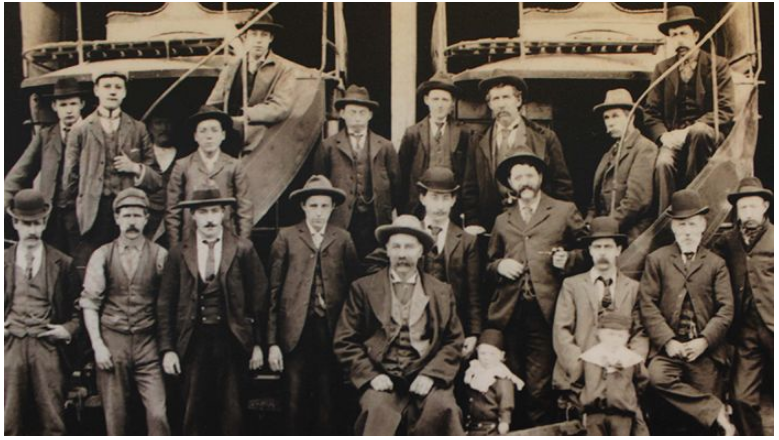
There were also a few accidents, such when people jumped off the tram while it was still moving and being run over by it or a following vehicle. Remarkably few accidents however, considering how many people used these trams which ran seven days a week. Some horse trams still ran in 1904 in Ballarat (a news story of two tram horses in September bolting with tram and it hitting a cab, but no-one was hurt, horses also unhurt and caught safely.
Interestingly, most of the horse trams were bought by the Electric Supply Company of Victoria in 1903 to convert to electric trams. Not sure if this happened but some were towed by the electric trams, as shown in the image below right (Town Hall and Sturt Street, including an electric tram towing an ex-double decker horse car, Ballarat, Victoria, 1907.) The electric powerhouse for the new electric trams in Ballarat, started in 1903, was a thing of wonder at the time (see image below left).
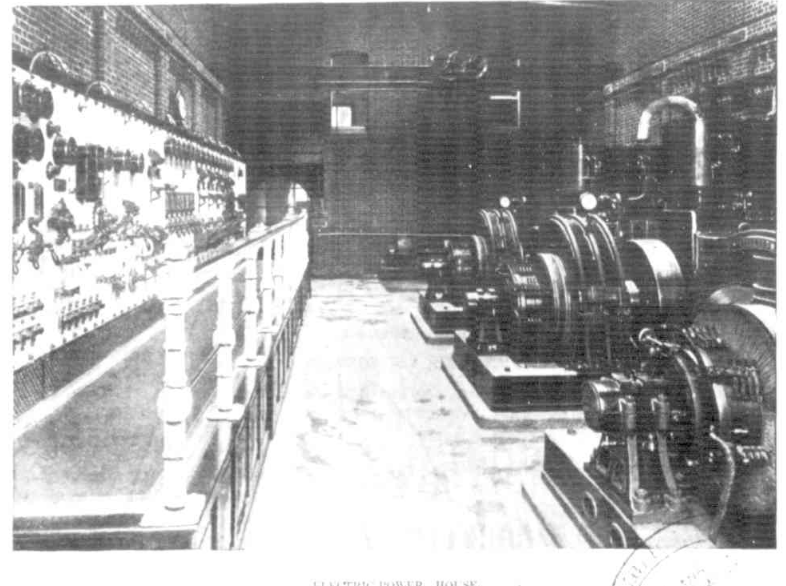
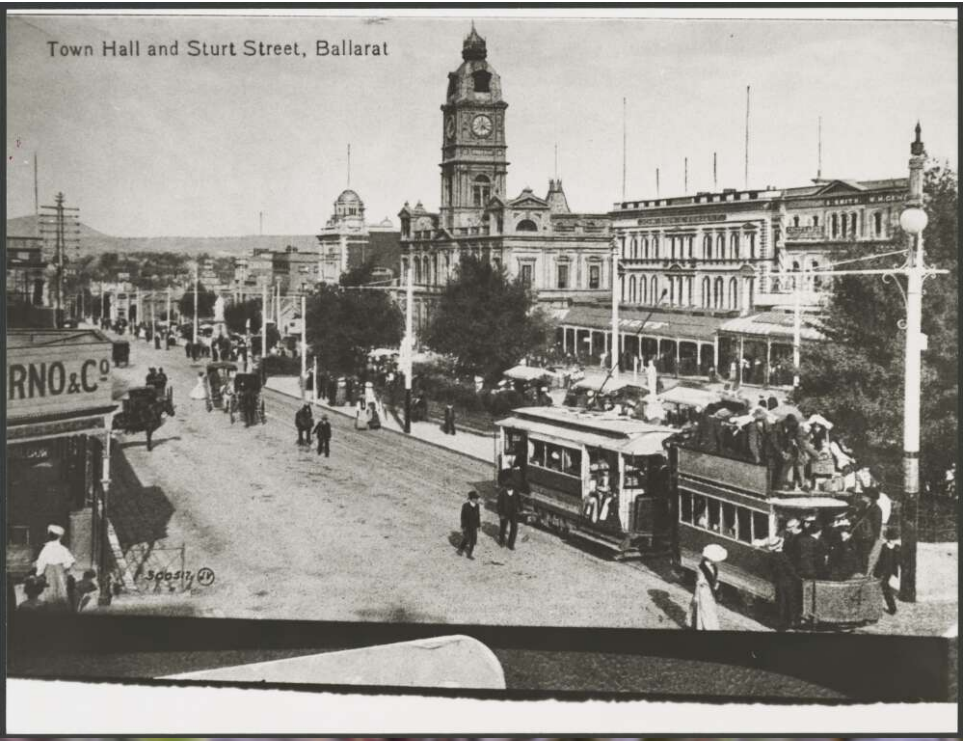
Ballarat Tramway Museum website has lots of great info and photos of a wonderful horse tram still in use there – a survivor from the horse days, rescued and rebuilt, even more incredibly, the first tram built for Ballarat, in 1887! If you’re ever in Ballarat the Tramway Museum is a tremendous place to visit – and they have a Facebook page too.